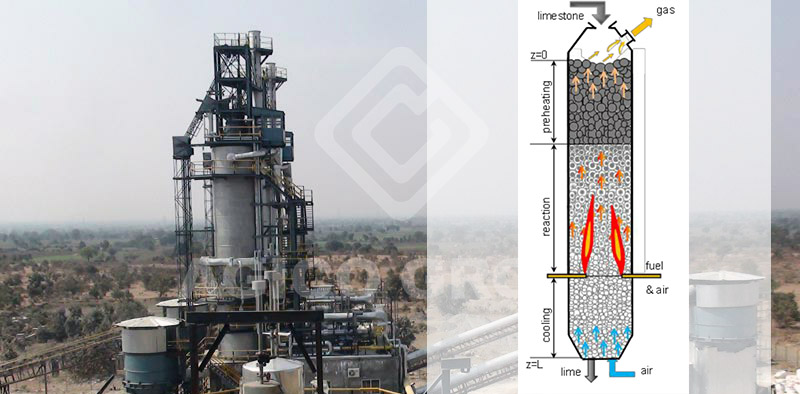Do You Know Cement Clinker Firing Range

What is Cement Clinker Firing Range
When the vertical kiln is calcined, there is a gap between the material of the unloading movement and the kiln body, small ventilation resistance, strong side wind, so is the heat taken away by the side wind, and kiln wall heat dissipation is relatively large, all these factors results in un-uniform temperature. The internal calcination temperature field, high center temperature, low edge temperature, as shown in the figure. Because the center temperature is relatively high, in order not to cause a large block, the coal blending amount should not be too high, so as edge temperature. In order not to cause the clinker to burn, more coal should be added, which is a contradiction.

Many methods can be used to eliminate the hazard caused by uneven temperature field of vertical kiln to clinker calcination. If the differential calcination method is used, two kinds of raw materials with different coal content, namely the side material and the middle material are used, but it is difficult to realize in actual production, when the material is mixed, or the material with high coal content on the side is very easy to roll to the middle, resulting in greater temperature unevenness. It is also possible to use measures to strengthen the kiln insulation, inorder to reduce the uneven temperature field, but it cannot fundamentally eliminate the disadvantage of uneven temperature field.
If such a raw material ingredient solution can be found, the raw material does not form a large block at a high temperature, but can be fired at a low temperature, and the raw material ingredient solution is most suitable for vertical kiln calcination. This is why the concept of clinker firing range is introduced.
-
The lower limit temperature of the firing range
It is known from experiments that no matter what raw material is produced, as shown in Figure, the c-caO content of clinker will decrease as the calcination temperature increases. If the free calcium oxide in the low temperature part of the vertical kiln can reach 4%, the free calcium oxide in the high temperature zone of the vertical kiln must be less than 4%, or even less than 1%, and the average free calcium oxide content of the whole kiln surface is about 2%. Considering that the c-CaO content of clinker in most of the shaft kiln cement plants is between 2% and 4%, the temperature at which the f-CaO content in the clinker is reduced to 4% is used as the Lower limit temperature of clinker firing range . -
The upper limit temperature of the firing range
As shown in Figure, the raw material was calcined to different temperatures, and the shrinkage rate and melting rate were found to be continuous changes without a mutation process. However, if the laminated green sheets are bonded, there is a significant mutation process. If the temperature does not reach the bonding temperature, the green sheets do not stick, but if the bonding temperature is reached, the bonds are immediately adhered, the mutation is obvious, and the end point is easy. Judge. Therefore, the temperature at which the laminated green sheets are all firmly bonded is the upper limit temperature of the firing range. -
Definition of firing range
Based on the above experiments, the following clinker firing range definition is obtained: under the condition of raw material preparation and calcination conditions, the c-caO content of clinker gradually decreases with the increase of temperature. The temperature range from when the f-CaO content is lowered to 4%, when the clinker is agglomerated is called the firing range. Among them, the laminated green sheets are all firmly bonded as a mark of clinker knots.
The larger the clinker firing range, the more suitable it is for the vertical kiln calcination. According to the firing range theory, the optimal batching scheme of the shaft kiln can be selected and many practical problems in production can be solved.

